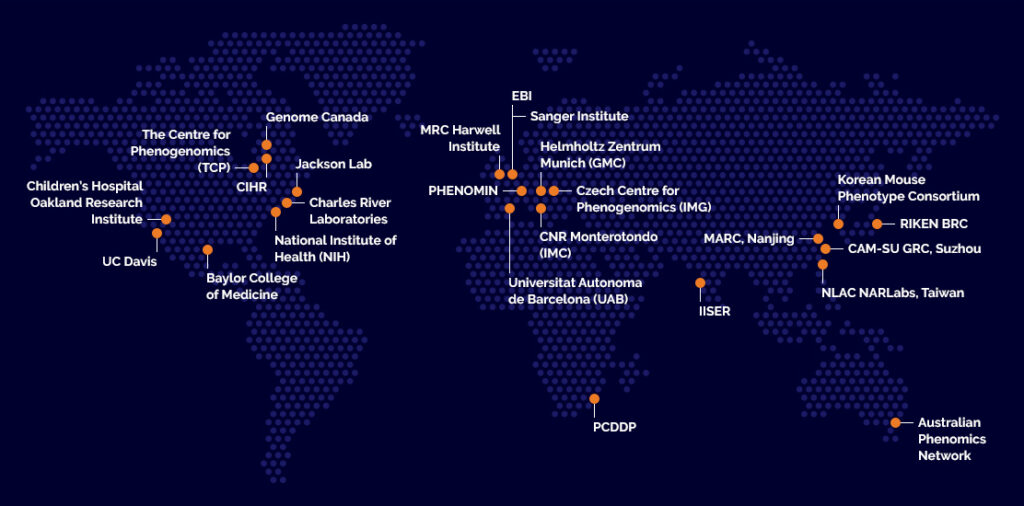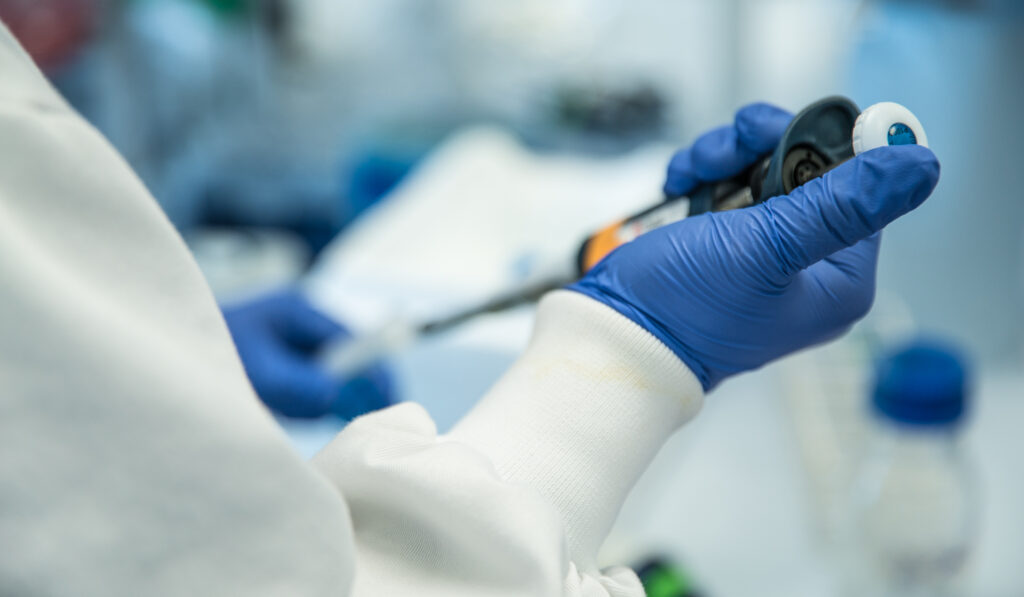The International Mouse Phenotyping Consortium (IMPC) is a collaboration between world-leading research institutions that specialise in mouse genetics to identify the function of every protein-coding gene in the mouse genome. In recent years, many projects have aimed to sequence the entire genome of numerous species, such as the Human Genome Project, but for many of these projects, the function of these genes remains unknown. The IMPC aims to complete an open-access database that describes what each gene does and how it can affect a mouse physically when it doesn’t work properly.

All organisms have two versions of each gene called alleles. Genes control the production of proteins within organisms, which are vital for cell structure and function. Mutations can cause genes to stop working, which changes the function of the protein or the amount produced. These changes can disrupt development and cause physical and chemical abnormalities.
To find the function of each gene, the IMPC genetically alters mice by turning off one or both alleles for each protein-coding gene, creating a knockout mouse line. The IMPC then conducts a series of tests to find what effect the alteration has had, such as testing grip strength, body weight, blood content, behaviour, sleeping and eating patterns, sight, hearing and much more. The IMPC then analyses the test data for significance and uploads findings into the open-access database. The knockout mouse lines are deposited in publicly funded repositories so researchers can obtain mouse lines for their studies.
How Does Mouse Genetics Apply to Humans?
We share 97% of our DNA with mice, as well as being biologically and behaviourally very similar to humans. They are also very well understood, convenient, and reproduce quickly so that we can observe and study the genetics of several generations. This makes mice a reliable model for human disease and researchers have used them to study cancer and inherited diseases such as diabetes, heart disease, Parkinson’s and Alzheimer’s for decades.
Queen Mary University of London (QMUL) takes IMPC data and analyses it to find associations to human disease. One method used is the study of ‘orthologs.’ These are genes in different species that share an ancestor gene and are therefore more likely to have a similar function. Another method is through data analysis – comparisons are made between the physical changes seen in the mouse after a gene has been turned off to the disease characteristics listed in human rare disease databases, such as OMIM and Orphanet, to see if there are any significant similarities. Through this, genetic mutations in mice can be related to disease in humans.
In 2017, experts from the IMPC and QMUL analysed 3,328 genes in the database and identified models for 360 diseases, including possibly the first models for type C Bernard-Soulier, Bardet-Biedl-5 and Gordon Holmes syndromes.
A disease is usually considered rare if less than 1 in 2,000 people is affected within the population, meaning most genetic conditions are classed as rare diseases. Some of the more well-known genetic diseases, such as Cystic Fibrosis, Muscular Dystrophy and Multiple Sclerosis are well studied but others are not. The less researched a condition is, the harder it is to treat and manage. Some mutations, and the disease they cause, are so rare that there are only clinical records of one or a few families with shared symptoms.
A major aim of the IMPC database is to assist research into rare disease, building a starting point for novel research into the mechanisms of rare disease, new possible treatments and precision medicine – allowing doctors to choose personalised treatments on a genetic basis. Through this, patients can receive accurate and effective healthcare for their conditions.
IMPC Resource Use
Data experts within the IMPC find new ways of analysing the IMPC database (and other open access rare disease databases) to find new ‘candidate genes’ – genes that have not previously been related to disease but have a high chance of causing disease. Recent IMPC screens include finding possible genetic causes behind hearing disorders, metabolic diseases, integumentary and oculocutaneous (hair, skin, eyes and pigmentation) conditions, sleeping and eating disorders and neurodegenerative disease.
Externally, researchers are constantly using IMPC resources for their work. Recent examples of how IMPC alleles have been used are:
- Clear cell sarcomas, a rare soft tissue cancer.
- Bardet-Biedl syndrome (BBS) which causes vision loss, obesity, extra fingers and toes and learning problems, among other symptoms.
- Primary familial brain calcification (PFBC), in which deposits of calcium accumulate in the basal ganglia – structures found deep within the centre of the brain. This can cause movement disorders and psychiatric problems like psychosis, dementia and vertigo.
- Aicardi-Goutières syndrome (AGS) which causes severe brain dysfunction leading to fevers, seizures, developmental issues and muscle issues. Symptoms start very early, around one year of age, and due to the severity of the condition, most do not reach adulthood.
- Gray platelet syndrome (GPS), a bleeding disorder that can cause easy bruising, nosebleeds and heavy bleeding after an injury.
- Karyomegalic interstitial nephritis (KIN), a hereditary, progressive and chronic form of kidney disease.

Researchers can source mice, embryonic stem cells and data for each processed gene on the IMPC website and database. Start searching genes by using our search function above.
For the Future
Since data release 11, the IMPC has now fully tested 6,440 protein-coding genes, but there are still over 11,000 mouse orthologs to be processed and their association to disease still needs to be analysed. The IMPC’s key aim is to complete the analysis of every protein-coding gene in the mouse genome. Having a complete database will only further the use and applications of IMPC resources in rare disease research, opening possibilities for new treatments and better healthcare for patients.

